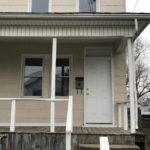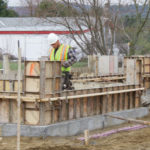The housing crunch is also being felt in rural cities across the U.S.
“…many communities don’t have enough homes for new workers and ignoring the issue could result in fewer jobs in the long run.”
[Emphasis added.]
The housing crunch is also being felt in rural cities across the U.S.
“…many communities don’t have enough homes for new workers and ignoring the issue could result in fewer jobs in the long run.”
[Emphasis added.]
Photo by Abbey Hambright via flickr, CC BY-NC-ND 2.0
“Generations of racist government policies such as redlining, the razing of neighborhoods to build highways, and exclusionary zoning has created deeply segregated and unequal neighborhoods. These policies both prevented people of color from accessing resources where they lived and from moving to suburban neighborhoods where resources were being invested.”
“Advocates and renters argue that protecting tenants is good policy because it advances equity, economic opportunity, and even a healthier environment.”
Read full article from Shelterforce Source: Say It Loud: Renters’ Rights are Civil Rights! – Shelterforce
Thanks to Shelterforce for publishing such articles as this one.
[Shelterforce Note: This article is adapted from the IGNITE! Community Pitch Fest, held at the Grounded Solutions Intersections 2017 conference on Oct. 11, 2017. Out of 20 entries and 6 finalists, audience members chose Public Advocates’ pitch as the winner.]

NEWS RELEASE
“With the motivated resident leaders that these two parks have, we have seen success in the cooperative model throughout Vermont, New Hampshire and elsewhere. Cooperative ownership can lead to improved quality of life and maintain the long-term affordability for the park’s residents. It creates thriving communities where residents can continue to own their home, collectively own the surrounding land and prosper.”
St. George & Hinesburg, VT – A coalition of two mobile home park cooperatives of St. George Villa MHP and Sunset Lake Villa MHP are working feverishly to purchase their respective parks from private ownership and have put forth their best offer to purchase the parks. At a public meeting Wednesday, December 13, 2017, residents heard from their cooperative board’s terms of making an offer, including the engineer’s inspection report and property appraisal completed with financial support from the Vermont Housing and Conservation Board. The best initial offer the cooperative can make will be limited to the appraised value they’ve received of $6,025,000.00; this is well short of the current asking price registered with the State of Vermont for the two parks of $6,950,000.00.
With the motivated resident leaders that these two parks have, we have seen success in the cooperative model throughout Vermont, New Hampshire and elsewhere. Cooperative ownership can lead to improved quality of life and maintain the long-term affordability for the park’s residents. It creates thriving communities where residents can continue to own their home, collectively own the surrounding land and prosper.
Residents, knowing it’s a long shot for the owner to accept their offer are still proceeding for their once in a generation opportunity to bring their park out of private investors hands and under the control of the residents who live there. Residents thus far have been successful in exercising their petitioned rights under Vermont law, allowing them up to 165 days to make an offer. They know it is an uphill battle with potential outside bidders willing to offer significantly more.
CVOEO’s Mobile Home Program providing residents support about their rights under state law and the Cooperative Development Institute providing technical purchase, and cooperative management assistance will continue to stand with residents through this process. A process we have seen the first-hand transform the lives of the residents living cooperatively owned communities
The coming days and weeks will tell if the resident’s offer will be accepted. In making the offer, the resident cooperative is willing to raise their current lot-rents now so they can see their money reinvested into the resident-owned land to keep long-term affordability. The long-term affordability is particularly important given that Vermont and specifically Chittenden County struggles to provide adequate, affordable housing supply to its residents. Under new private ownership, it’s most likely they will also see lot-rents increased for investor gain. We are hoping the informed and responsible offer made by residents will prevail.
###
Housing Perspectives (from the Harvard Joint Center for Housing Studies)
The Harvard Joint Center for Housing Studies advances understanding of housing issues and informs policy.

Read More From the Source: Housing Perspectives (from the Harvard Joint Center for Housing Studies)
By Briana Bocelli, a freelance writer for True North Reports. 12/6/17

“The House and Senate tax bills could be detrimental to an already struggling affordable housing situation in Vermont, according to estimates released by the Vermont Affordable Housing Coalition.”
A Paper from CARSEY RESEARCH: University of New Hampshire, Carsey School of Public Policy, Fall 2017, Jessica A. Carson and Marybeth J. Mattingly
Rural Housing Challenges Through the Lens of Two New England Communities
“In this brief, [Jessica A. Carson and Marybeth J. Mattingly] use interview and focus group data to describe some of the ways that restricted rural housing stock affects working families in two rural New England counties, and explore solutions proposed by rural residents and experts to make housing affordable …
“Subsidies and publicly funded programs can play a part in alleviating the challenges of affordable rural housing, but addressing the issue of affordable housing in rural places will require a variety of approaches. For instance, at the local level, residents can encourage local zoning and planning boards to align town regulations with “inclusionary zoning” practices, such as requiring a certain percentage of housing units to meet affordability standards and offering incentives to developers for constructing affordable dwellings. Municipalities might also loosen or alter zoning restrictions to reduce lot size requirements and allow construction of structures other than traditional single-family
dwellings, including duplexes, in-law apartments, backyard cottages, townhouses, or bungalow courts.”
Building homes for extremely low-income people allows other homes to filter up to people in need—a better bet than waiting for luxury units to trickle down.
Author, Miriam Axel-Lute – November 2, 2017
“There’s a lot of talk about how homes will “filter down.” The argument goes that building new luxury housing will allow the wealthiest people to move into new housing, and (if the supply outstrips demand), eventually what had been high-end housing will command less money and will “filter down” to be affordable to lower income levels. Just how well this works, for whom, and how quickly is the subject of muchdebate, which I won’t wade into right now.”
“But here’s the thing we don’t talk about enough: developing affordable housing in a tight, high-cost market also increases overall affordability through filtering! Just in the other direction—it trickles up.”
Source: Trickle Up Housing: Filtering Does Go Both Ways – Shelterforce Click the link to read the whole story on the Shelterforce site.
(This piece first appeared on the Burlington Free Press opinion page on September 20, 2017)
Safe, stable and affordable housing is essential for a community to thrive economically, socially and culturally. Vermont continues to struggle with housing affordability, and unfortunately the state’s largest city of Burlington is no exception.
A Burlington resident needs to earn over $26 an hour to afford the fair market rent for a two bedroom apartment – that’s more than $5 per hour above the national average.
This is troubling and we hear about the ramifications from families and seniors who can’t find places to live, from young people who are choosing to leave the state for more affordable areas, from agencies serving the homeless, and from our employers who struggle to find qualified employees due to the high cost of housing.
There are several components to addressing the issue of affordable housing, and one of the most critical is the need for capital investment to build new housing and to renovate existing properties. While many additional homes have been built over the past several years, many more are needed to accommodate the growth of 2,375 new households projected for Chittenden County by 2020. Current production is being absorbed into the market quickly, and the long-term vacancy rate for rentals still hovers between 1 and 2 percent, putting supply and demand out of whack.
Not surprisingly, according to Census data, over half of Chittenden County renters are “cost-burdened,” meaning they pay too much of their income for housing, leaving them without enough for other basic necessities.
In terms of affordable housing, last month the Champlain Housing Trust had just five vacancies among their 2,000 plus apartments, and only one vacancy in Chittenden County. Cathedral Square Corp. had over 800 seniors and people with special needs on its waiting list looking to move into affordable housing.
Furthermore, the effective vacancy rate for subsidized rentals in Chittenden County was literally 0 percent for all bedroom sizes. These shocking numbers help explain why the Burlington Housing Authority typically measures their waiting list in years rather than weeks or even months.
These numbers are astonishing, but the good news is that there are clear steps we can take to address the cost of housing. No one project will be the panacea for Burlington’s affordable housing crisis, but developments like the proposed Cambrian Rise project in Burlington’s North End can significantly improve housing options for residents and relieve the pressure on a strained system.
As proposed, Cambrian Rise will be a 739-apartment mixed-income housing neighborhood with an impressive number of affordable homes. The neighborhood will offer Burlington residents housing options for all income levels.
Under Burlington’s inclusionary zoning ordinance, the development will include 128 affordable rentals for families and seniors with household incomes of less than 65 percent of the Chittenden County median income. In English that translates into housing that is affordable for a one-person household making $37,500, or $53,600 for a family of four.
However, with federal, state and local dollars available to Champlain Housing Trust and Cathedral Square, which are partnering to help create Cambrian Rise, many apartments will be even more affordable.
Furthermore, another 60 homes will be affordable to homebuyers earning below 75 to 80 percent of median income, or below at most $46,150 for a single individual and $65,900 for a family of four. In all, the development will offer 188 permanently affordable homes to low income Vermonters. In addition, Cambrian Rise will offer “workforce housing” for sale and rent targeted to more moderate income people up to 120 percent of the median income. Our working families, our seniors and people with disabilities, and our employers desperately need these new homes.
Cambrian Rise not only offers a diverse neighborhood, it is also a model for sustainable development. The project features alternative transportation options, energy efficiency, a state of the art stormwater system to protect the lake, and a conserved 12-acre public park – giving us continuous public access to Lake Champlain from Perkins Pier to North Beach.
Convenient access to the bike path, car share opportunities and a heated bus terminal for year-round use will ease the financial burden for residents of the neighborhood. This mixed-use development is a model for the future, where diverse residents of all income levels, abilities and ages can live, work and play in one neighborhood.
Erhard Mahnke, of Burlington, is coordinator for the Vermont Affordable Housing Coalition. The Vermont Affordable Housing Coalition is a partner organization in the Thriving Communities- Building a Vibrant Inclusive Vermont campaign.
The Thriving Communities campaign highly recommends to our blog readers the very good article by Richard D. Kahlenberg, which was featured in the latest edition of “Poverty & Race”newsletter (July – September, 2017, Volume 26: Number 3); published by the Poverty & Race Research Action Council.
“An Economic Fair Housing Act” PRRAC Poverty & Race Newsletter, July-September 2017

We encourage you to read this if you are interested in affirmatively furthering fair housing, decreasing geographic segregation by race and poverty, and increasing many opportunities for people now trapped in low opportunity neighborhoods in our nation.
“… worsening housing segregation by class is extremely troubling, because it affects the lives of Americans in profound ways. Where people live affects so much else in their lives— access to transportation, employment opportunities, access to decent health care, and, perhaps most important, access to good schools. …”
Shelterforce blog by Sasha Hauswald – September 20, 2017
… Number 4 is one of my favorite. (Thriving Communities Editor)
” 4. Streamline barriers to development
Many jurisdictions have zoning code requirements that are so complex that it is nearly impossible to build anything without lengthy and unpredictable approval processes for special exceptions to the zoning code. Inclusionary done right can greatly reduce procedural barriers to new development.
Affordable housing requirements are often adopted in combination with area-wide up-zoning or enhanced flexibility to build, by right, a reasonably profitable multifamily building. In these cases, inclusionary housing programs can actually increase development activity. Most importantly, inclusionary housing policies establish clear and predictable expectations that local developers can plan around. “